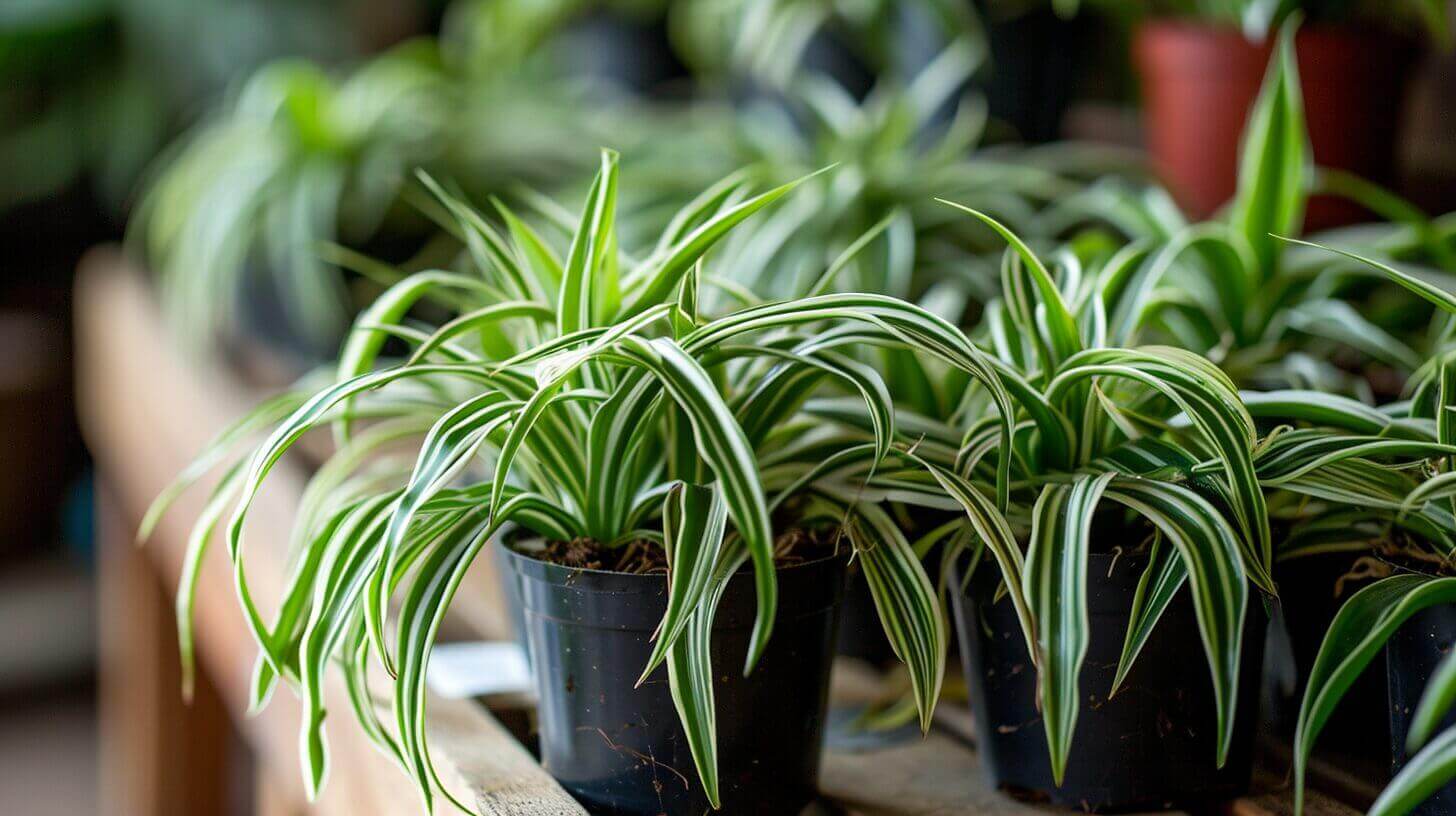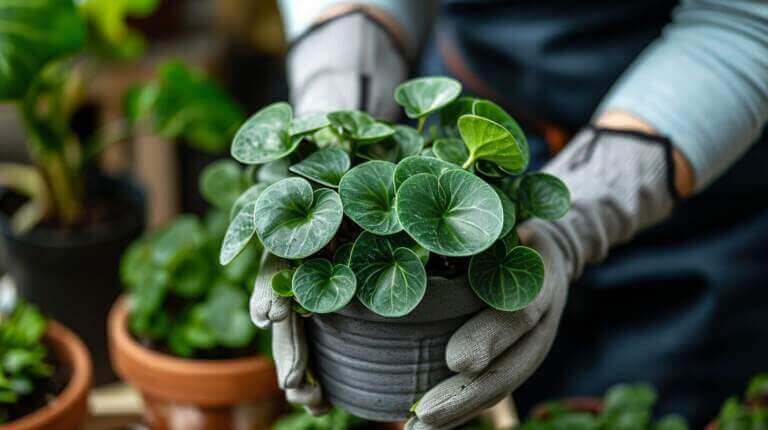Are you a beginner looking to expand your plant collection? If so, learning how to propagate a spider plant can be a rewarding and cost-effective way to do so.
This step-by-step guide will provide you with all the necessary instructions to successfully propagate a spider plant. From choosing the right plant to caring for the newly propagated ones, this article will provide you with detailed information to ensure your success.
Let’s dive in and discover the joy of propagating spider plants!
Key Takeaways
- Consider factors such as health, size, and varietal characteristics when choosing a spider plant
- Prepare the necessary propagation materials, including potting soil, pots, and tools, to create a suitable environment for the new plants to grow
- Spider plants can be propagated through division or cuttings, each method requiring specific steps
- Care for newly propagated spider plants by providing the right watering frequency, placing them in bright, indirect sunlight, and following care tips to promote healthy growth.
Choosing the Right Spider Plant
When selecting a spider plant for propagation, it is important to consider factors such as the health, size, and varietal characteristics of the plant.
Spider plants come in various varieties, each with its own unique features and growth habits. Some popular varieties include the classic green spider plant, the variegated spider plant with white stripes on its leaves, and the curly spider plant with its wavy foliage.
It is essential to choose a healthy plant that shows no signs of disease or pest infestation. Look for plants with vibrant green leaves and strong root systems.
Additionally, consider the size of the plant, as larger plants tend to produce more offspring.
By carefully selecting the right spider plant, you set the foundation for successful propagation and a thriving new plant.
Now, let’s move on to preparing the propagation materials.
Preparing the Propagation Materials
To successfully propagate a spider plant, it is crucial to gather the necessary materials and prepare them appropriately. Here are four important steps to follow when preparing the propagation materials:
- Purchasing supplies: Before starting the propagation process, it is important to purchase the necessary supplies. This includes potting soil, small pots or containers, a sharp knife or scissors for cutting the plant, and rooting hormone (optional).
- Gathering necessary tools: In addition to purchasing supplies, gather the necessary tools for the propagation process. These may include gloves to protect your hands, a clean cutting board or surface, and a spray bottle for misting the newly propagated plants.
- Cleaning and sterilizing: Before using any tools or containers, it is crucial to clean and sterilize them to prevent the spread of diseases or pests. Wash pots and containers with warm, soapy water, and rinse them thoroughly. Use rubbing alcohol to clean and sterilize cutting tools.
- Preparing the potting soil: Spider plants prefer well-draining soil, so prepare a mix of potting soil and perlite or sand to improve drainage. This will provide a suitable environment for the new plants to grow.
Propagating Spider Plant Through Division
The division method is a reliable technique for propagating spider plants, allowing you to create multiple new plants from a single mature plant.
To propagate spider plants through division, start by carefully removing the mature plant from its pot. Gently separate the plant into smaller sections, ensuring that each section has a good root system and a few healthy leaves.
Plant each division in a separate pot filled with well-draining soil and water thoroughly. Place the pots in a bright, indirect light location and keep the soil consistently moist.
Within a few weeks, the divisions will establish roots and start growing.
Troubleshooting common propagation problems includes ensuring that each division has enough roots and providing proper care to avoid issues such as root rot or overwatering.
Propagating Spider Plant Through Cuttings
One effective way to propagate spider plants is through cuttings, which involves using a sharp pair of scissors or pruning shears to carefully remove a healthy section of the plant for further growth.
Here are some key steps to successfully propagate spider plants through cuttings:
- Select a healthy spider plant with long, trailing stems and vibrant green leaves.
- Locate a mature offshoot or ‘baby spider’ near the base of the plant.
- Using clean, sharp scissors, cut the offshoot from the mother plant, ensuring it has at least a few inches of stem.
- Place the cutting in a jar or glass of water, ensuring that the bottom of the stem is submerged while the leaves remain above the waterline.
Caring for Newly Propagated Spider Plants
After propagating spider plants, proper care should be taken to ensure the successful growth and establishment of the newly propagated plants. This involves providing the right watering frequency and ensuring they are placed in ideal lighting conditions. Spider plants are relatively easy to care for, making them suitable for beginners.
To help visualize the care requirements for newly propagated spider plants, refer to the table below:
| Care Tips for Newly Propagated Spider Plants |
|---|
| Watering Frequency |
| – Keep the soil moist, but not waterlogged |
| – Water once or twice a week, depending on the humidity levels and soil moisture |
| Ideal Lighting Conditions |
| – Place the plants in bright, indirect sunlight |
| – Avoid direct sunlight, as it can scorch the leaves |
Following these care tips will promote healthy growth and enable the newly propagated spider plants to thrive in their new environment.
Frequently Asked Questions
How Long Does It Take for a Spider Plant Cutting to Root?
The rooting time of spider plant cuttings can vary depending on several factors. Factors such as temperature, humidity, and the overall health of the cutting can influence the time it takes for the roots to develop. Generally, it can take anywhere from 2-6 weeks for spider plant cuttings to root.
During this time, it is important to provide proper care to the cuttings, including keeping them moist but not overly wet and providing them with sufficient indirect light.
Can I Propagate a Spider Plant in Water Instead of Using Soil?
Propagating a spider plant in water is a viable alternative to using soil. This method involves placing the plant cuttings in water until they develop roots, which usually takes about two to three weeks.
There are several benefits to propagating in water, including the ability to easily monitor root development and the avoidance of potential soil-borne diseases.
However, it is important to eventually transfer the rooted cuttings into soil to ensure their long-term health and growth.
Is It Necessary to Use Rooting Hormone When Propagating a Spider Plant?
When propagating a spider plant, the use of rooting hormone is not necessary, but it can be beneficial. Rooting hormone alternatives can be used, such as a mixture of honey and cinnamon, which provide natural rooting agents.
However, rooting hormone can expedite the rooting process and increase the success rate of propagation. It helps stimulate root growth and enhances the plant’s ability to absorb nutrients.
Ultimately, the decision to use rooting hormone depends on the individual’s preferences and desired results.
Can I Propagate a Spider Plant without Repotting it?
Yes, it is possible to repot a spider plant without repotting it. Spider plants are easy to propagate through their offshoots or “spiderettes.” Simply place the spiderette in a glass of water until roots appear, then transfer it to a new pot. This way, you can successfully repot spider plants without the need for repotting.
Can I Propagate a Spider Plant at Any Time of the Year?
Spider plants can be propagated indoors throughout the year, but there are optimal times for successful propagation. The best time to propagate spider plants is during the spring and summer months when the plant is actively growing. During this time, the plant is more likely to produce healthy, well-rooted offshoots.
However, with proper care and attention, spider plants can still be successfully propagated during other times of the year.
How Often Should I Water My Newly Propagated Spider Plant?
Watering frequency for newly propagated spider plants is a crucial aspect of their care. To ensure successful propagation, it is important to strike a balance between providing adequate moisture and avoiding overwatering.
Spider plants prefer evenly moist soil, but they are susceptible to root rot if watered excessively. A general guideline is to water them once the top inch of the soil feels dry.
Regularly monitoring the soil moisture and adjusting your watering schedule accordingly will help your newly propagated spider plant thrive.







